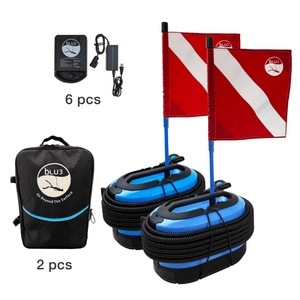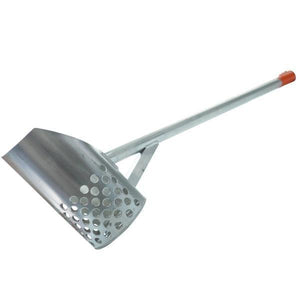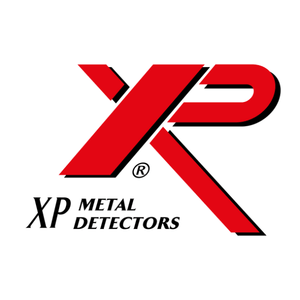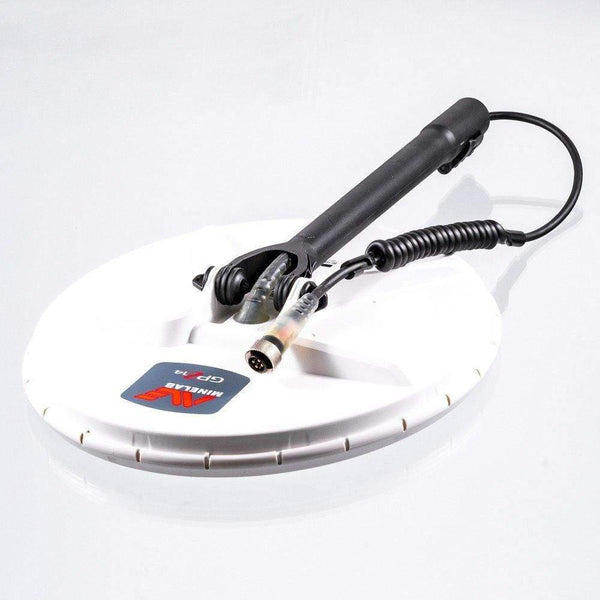How Deep Can You Go With A Metal Detector?
You might be interested in metal detecting and want to know how deep a metal detector can go.
The majority metal detectors can find things about 10 to 28 cm (4 to 11 inches) deep. A mid-range metal detector can reach 12 to 18 inches (30 to 45 cm) deep in ideal circumstances. Some advanced 3D Ground Scanners can go as deep as 30 m (98.4 feet).
The exact depth relies on the type of device you are using and what you are trying to find. And there are other things, such as the mineralization in the dirt.
In this article, we'll look at how far down a metal detector can go. There is a lot of information that doesn't match up and answers that aren't clear.
First, we'll talk about how the thing you're looking for's size, shape, and direction affect how deep you can find it. Next, we will talk about the different kinds of metal detectors. From technology to search coils, we'll go over everything you need to know. Last, we'll talk about how the minerals in the earth can affect how deep you look. Let's start.
The Metal: Your Goal
Metal detection devices can only find things that are made of metal. In the language of metal detecting, any metal item you are looking for is called a "Target.". However, GPR machines (Ground Penetrating Radar) can also find non-metal artefacts, which can be very small relics made of pottery or other materials to large cavities deep underground.
If you know more about your target, you'll be better able to find it. The depth to which the metal detector goes depends on the type of metal, size, shape, and direction of the subject.
Target Size
Larger objects are easier for a metal detector to find than smaller ones. This is because bigger items have a greater surface area, which makes a metal detector's electromagnetic (EM) field less stable.
Target Shape
Because they have more visible surface area, round targets like pennies or jewels and flat, rectangular ones like metal containers or chests are simple to find at greater distances. Shapes like nails or lines that are long and thin are harder to find deep in the ground.
Target Orientation
It is easier to find an object that is laid flat (horizontal) than one that is standing up. This happens because the electromagnetic field (EM field) from the receiver is disrupted by more surface area. Since there is less space to work with, it is harder to find a straight goal.
Target Composition
How deep you can look for metal depends on what kind of metal you want to find. Metals that conduct electricity well, like silver, can be found further down than metals that don't conduct electricity well, like precious metals, lead, or steel made of stainless steel.
Frequencies
The regularity at which they work is the first thing that sets them apart. What does that mean, though?
The number of electromagnetic (EM) waves that a metal detector can send through the ground per second is its working frequency. We use kilohertz (kHz) to measure these speeds. For example, a 7 kHz frequency can send out 7,000 EM waves per second. On the other hand, a 40 kHz frequency can send 40,000 waves per second.
The frequency of most metal detectors is between 7 kHz and 25 kHz. Single-frequency and multi-frequency technologies are the two main types of frequency technologies.
Single-Frequency
Most low-end metal detectors apply a technology called VLF, which has only one frequency. Very Low Frequency is what VLF stands for. It sends a single frequency EM wave into the ground all the time.
Low frequencies (less than 8 kHz) work best for silver and copper, which are deep, big, or very conductive. Small gold pieces and other metals that don't carry electricity well are picked up by high frequencies (around 40 kHz). But they don't react to more conductive metals, which are easy to find with lower frequencies.
Several frequencies that are low are easy for equipment and power lines to mess up. As we've already said, this is EMI, which stands for electromagnetic interference.
Multi-Frequency
Metal detectors with more features use a communication method with more than one frequency. Multi-frequency technology sends out more than one frequency at the same time across the range.
Multi-Flex is a device for sending and handling signals over multiple frequencies. It is used in Garrett's ACE Apex detector. It has a range of frequencies from 5 kHz to 20 kHz.
Most people agree that Minelab's Multi-IQ communication and processing method is the best in the business. Multi-IQ works at frequencies between 5 kHz and 40 kHz. It depends on how the software in the device handles the data it gets. A good example of Multi-IQ technology can be found in the Minelab Manticore Metal Detector.
Pulse Induction
Pulse induction metal detectors offer impressive depth capabilities in the realm of treasure hunting. These detectors utilize electromagnetic pulses to penetrate deeper into the ground than their conventional counterparts. Depths can range from a few inches to several feet, depending on the detector's design and the size of the target. They are prized for their ability to locate valuable items like coins, relics, jewelry, and even buried caches, often overlooked by shallower detectors. Notable examples include the Minelab GPX 6000 and Garrett ATX. These powerful devices cater to both hobbyists and professionals, unlocking hidden treasures buried deep beneath the surface.
Features of software
A metal detector's ability to find things deep underground is affected by both its frequency and its software.
Many metal detectors have a function called "Ground Balance." It works to keep minerals in the ground from getting in the way. We'll talk more about ground mining later in this piece, but let's take a quick look at it now.
Mineralization of the ground can give off false signs. This is when a metal detector beeps as if it has found a target, but it's just picking up iron or salt particles in the ground.
To stop this from happening, Ground Balancing features turn down the messages sent by minerals in the ground. This means that only signs from real targets are left behind.
Does balancing the ground affect the depth?
Mineralization of the ground can hide small targets that are close to the surface. With ground balance, you can find gold or coins buried in soils with a lot of minerals.
The ability of a metal detector to tell the difference between different metal items is called "discrimination." This is because of how well they carry electricity and/or how magnetic they are.
Some metals, like silver, carry electricity very well. These can be separated based on how well they conduct electricity compared to gold or steel, which don't conduct electricity as well. Some metals, like iron, are magnetic, which makes them easy to find.
Does discrimination affect how deep something is?
When you ignore unpleasant targets like screws or nails, you can find things like coins that are hidden under the others.
Search Coils
The roundish thing at the tip of a metal detector's tube is the search coil. It has a pair of coiled wires, as its name might suggest. The Transmit Coil in one of the sets makes an electromagnetic (EM) field.
These changes in the ground show that a metal item may be there. There are many different sizes, styles, and ways to put together a search coil. Each one is made for a different type of target, search area, and grade level.
Search Coil Measurements
How much space a metal detector will take up depends on how big the search coil is. A medium-sized search coil can cover 2' to 3' (0.61 to 0.91 m) of ground every 3 to 4 seconds when it is swept across the ground.
How far down can a search coil go?
In general, a search coil's detecting depth is equal to its width.
The deeper a target can be found, the bigger the coil. But there is a point where the EM field is so big that the monitor can't pick up on small things. For coins and rings, that means a search coil with a width of 35 to 38 cm or more.
Sniper coils are small search coils. These coils range in size from 4 to 7 inches (10 to 18 cm) and can find things nearly as deep as 9 to 10 inch (22 to 25 cm) coils. We already said that it's 6 to 8 inches (15 to 20 cm) deep.
These small coils come in handy in "trashy areas" like farm sites and parks with a lot of trash. They make strong electromagnetic fields and are best for finding small things like earrings or gold bits.
Coils for a Medium Search are what most metal detectors come with. They usually have a width of 9 to 10 inches (22 to 25 cm) and make a search field that is about 8 inches (20 cm) wide and deep.
Medium-sized search coils work well in a lot of different places to look. They are good for popular objects like coins, rings, and various other jewelry.
The big search coils have diameters of 10 to 15 inches (25 to 38 cm) and give the best range and detecting depth.
Shapes of Search Coil
There are two main forms for search coils: circles and ellipses.
The most common form for search coils is a circle.
They offer a good mix of stability, coverage area, and accuracy in different kinds of dirt. Circular coils can find things a little deeper than circular coils.
Search coils that are shaped like an ellipse are narrow and easy to move in tight areas.
Their longer form gives them an identical amount of surface area as circle coils, but they can't sense quite as deep.
Configurations of Search Coil
Most search coils are either circular coils, double-d coils, or single-loop coils.
Concentric coils have a bigger coil on the outside that sends out an electromagnetic field and a smaller coil on the inside that gets signals.
The send and receive coils in a Double-D Coil are set up in "D" forms that meet.
This setup gives you a stable signal, less interference from EMI and minerals in the ground, and the ability to find things deeper than circular coils.
Monoloop Coils look like search coils with circular rings. They don't have multiple coiling's of wire; instead, they have a single coiling that both sends and gets messages. This set-up goes further into the ground than most circular coils.
Specialized Metal Detectors
Two-Box Detector
Two-box metal detectors are different from those that only have one search coil because they have two rectangular search coils. This setup can find things like caches and items that are far away and big. In exchange for that depth, they can't find things smaller than 3 inches (7.5 cm).
How deep does it go?
Two-box detectors can go as deep as 20ʹ (6.1 m). This depends on the size of the search target and minerals in the soil. The Fisher Gemini 3 can find small things to be found about 3 feet down, medium-sized things at 10 feet, and big things at 20 feet.
Fisher Gemini 3 Deep Seeking 2 Box Cache

3D Ground Scanners
A 3D ground scanner is a particular kind of metal detector that looks deep into the ground. It can find tunnels, objects, riches, and strange things under the ground.
Archaeologists study old towns, battles, and artifacts without moving the ground. These scanners are used by gold prospectors to look for mineral sources before they dig. Treasure hunters try to find things made of gold, silver, bronze, and other types of metal. People also use these to find caves, foundations, and secret rooms.
How deep do they go?
A 3D ground scanner like the OKM eXP 6000 can detect objects up to 98.4ʹ (30 m) below the surface.
The Nokta Makro Invenio is a state-of-the-art metal detector known for its cutting-edge technology and deep-searching abilities. It uses ground-penetrating radar (GPR), which is a new technology that lets it find objects at incredible levels. This metal detector can reach depths of up to 10-12 metres (33-40 feet) below the surface. This makes it a powerful tool for treasure hunters, historians, and geologists who work professionally. Its ability to go deep into the ground and show clear 3D images of buried objects make it the best choice for people who want to find valuable artefacts and secret wealth buried deep in the earth.

Ground Mineralization
Ground mineralization has been mentioned several moments so far, but what exactly is it?
Start with the dirt. Soil is made up of sand, dead plants and animals, and small amounts of minerals like zinc, magnesium, and iron. Ground mineralization means that the dirt has a lot of these minor minerals.
A metal detector's EM field gets messed up when the soil has a lot of minerals in it. This gets in the way of how deep you can go.
What causes minerals to form in the ground?
Minerals get into the ground through a natural process. Mineral amounts are low in new grounds, like those in parks and gardens. Rainfall brings iron and other minerals that are deep in the soil to the top over time. As these build up, there are more minerals in the ground.
Conclusion
In conclusion, metal detecting is a fun and interesting sport that gives people the chance to find secret treasures and learn about the past. How deep you can go with a metal detector relies on many things, such as the technology of the detector, your skill and experience, and the type of area you're looking in.
Even though current metal detectors have a lot of features and abilities that let them go to great levels, it's important to remember that depth isn't the only thing that matters. To find useful things, you need to do research, keep looking, and have a good eye.
So, how far down can a metal detector go? The answer depends on how hard you work, how much you care, and how much you enjoy the hunt. Whether you're a beginner just starting out or a seasoned detectorist with years of experience, Good luck hunting!



































